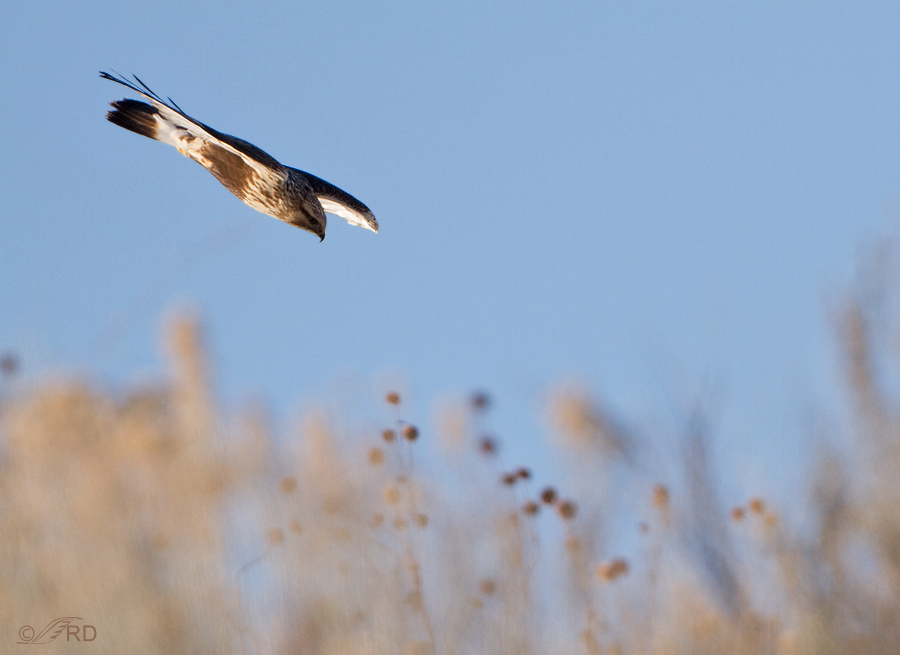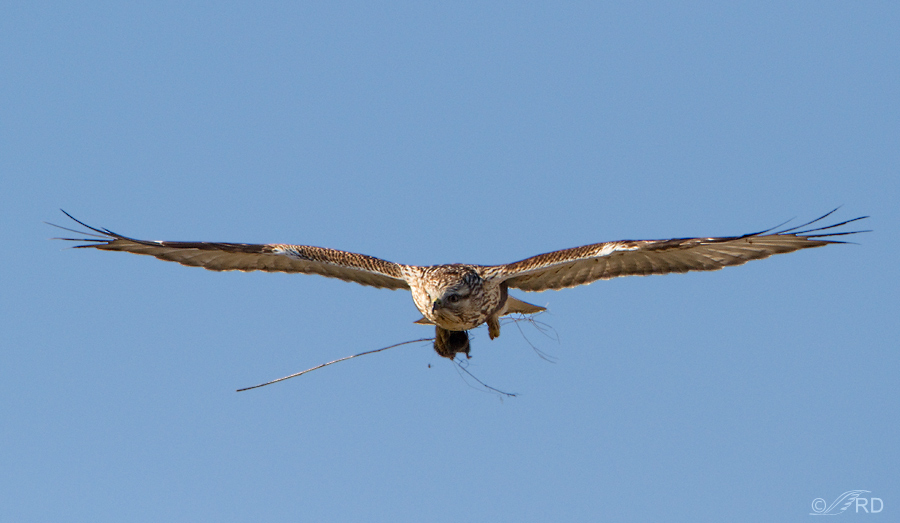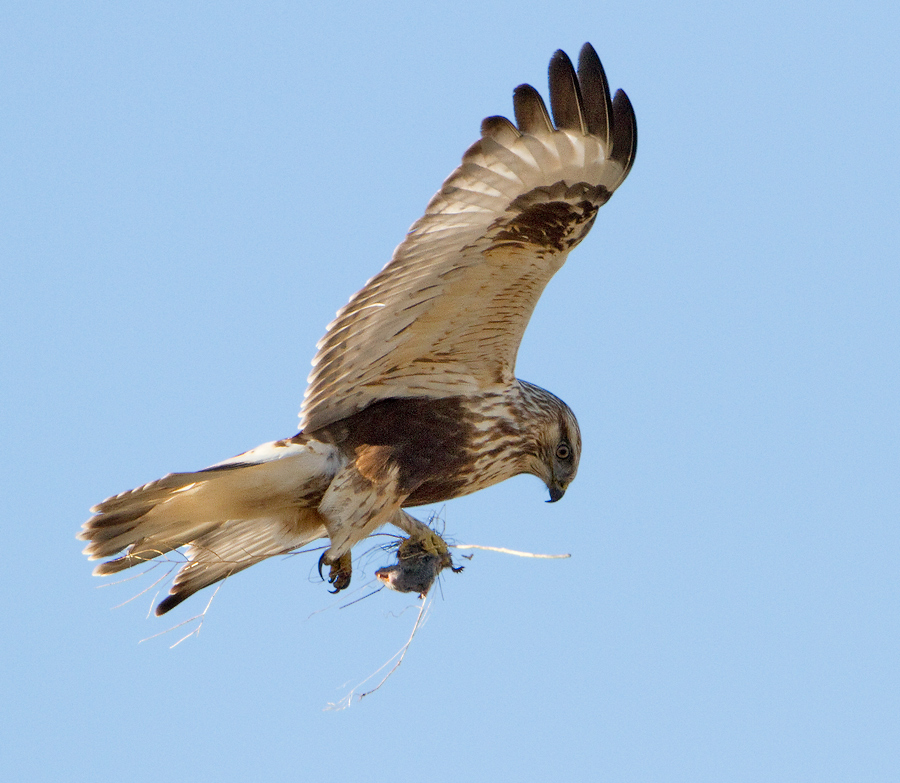I hope you’ll bear with me but this post will be more about behavior than image quality as I just didn’t have a good light angle for this little drama. As I’ve said elsewhere on this blog, one of my primary goals is to document interesting behaviors and at times that will take priority over the quality of the images.
When Rough-legged Hawks dive on prey it can be fairly dramatic. Typically they hover high up over the potential prey for a few moments, then dive fast and at a fairly steep angle. Occasionally they seem to hit the ground so hard that it rattles my teeth, almost making me expect them to bounce on impact.
1/2000, f/7.1, ISO 500, 500 f/4, 1.4 tc
This morning I watched this hawk hover, then dive. I think you can see from the wing position that this bird was still traveling at a good clip and at a fairly steep angle when it was only a couple of feet from the ground. The prey was on a hill above me and buried in this vegetation so I didn’t see the impact.
1/2000, f/7.1, ISO 500, 500 f/4, 1.4 tc
Often these attempts at prey are unsuccessful but this time the hawk caught a vole (along with a talon-full of debris). The bird came out of the grasses directly toward me but then turned to its left to give me a side view.
1/1600, f/7.1, ISO 500, 500 f/4, 1.4 tc
This little vole had a bucket-full of attitude and didn’t want to go down without a fight. In the two images prior to this one (which I haven’t included here due to poor quality) I’m pretty sure that the vole is biting the left foot of the hawk (which was held tightly up against the body) and this image shows the reaction of the bird – to look down and back at the vole and pull the rodent off of its foot. Here we see the voles wide open mouth and those mean little rodent incisors ready for action.
I’ve often wondered how common it is for raptors to “feel the pain” from their rodent prey. Several times in the past I’ve seen Northern Harriers drop voles after being airborne and wondered if it had been done deliberately because they’d been bitten. This hawk didn’t drop the vole but it certainly reacted to the apparent bite.
Ron





Those are great Ron, but what I really meant was the series from before (which you have in this one) to the actual capture, to after (which you also have in this one).
All I can say is these are really neat and I’m envious of your environs where you have the ability to use your truck as a blind and an unobstructed view to observe this behavior. Just fantastic!!
Interesting shots…I love the raptors, but always feel sorry for the prey…
Thanks for your contribution here Mike. The experiences you’ve described with raptors are very enlightening for me.
Ron, you get the coolest shots. “You make your own luck” as the saying goes, and you sure make a lot of it. I’m not making much with my camera, but am lucky to sometimes see raptors up close. It’s always fascinating to examine their legs and feet: scabs, bruises, callouses, scars of various ages, gnarly twisted toes, missing talons, calcified bumps from prior injuries, pine pitch, blood, fur and feather remains*, etc. all tell the story of a bird’s daily mission to keep itself fed. Rare to see it caught through a lens as it happens!
*We recently banded a female Sharpie that had a chipmunk tail impaled on a talon and fresh bite marks on both legs. A bulging crop seemed to indicate that she didn’t drop her meal.
Very interesting behavior, I would of never thought about the prey biting back but the one image clearly shows the vole’s mouth/teeth. Good eye to notice this.
Jim
Thanks Aristarkhos. Ths skin on bird legs (including raptors) is covered with scales. In addition, the lower legs of Rough-legged Hawks are feathered all the way to the toes. Yes, I suspect that both would provide some protection against bites. However rodent’s are known for their unusually powerful bites, made even more effective by their chisel-shaped incisors. In the other two photos I referred to it appears that the vole was biting the hawk right where the toes meet on the foot so it would have no feather protection there. It was obvious to me from my photos that this hawk was at least annoyed by the apparent bite.
Lovely captures and a great story to boot.
Never thought of the possibility of prey biting back but one question comes to my mind… aren’t predatory bird legs quite tough and thickened with that rubbery skin, enough to deal with bites and nips from resistant prey?
keen to know your thoughts on this.
Regards,
A
Fascinating behavior. Thanks for sharing.
I have been bitten by a mouse that I was rescuing from a cat and it bit very, very hard. This is a wonderful sequence. Thanks.
Wow! What fabulous images! I have been bitten by cornered wild rodents as well, they can be feisty little beasties.